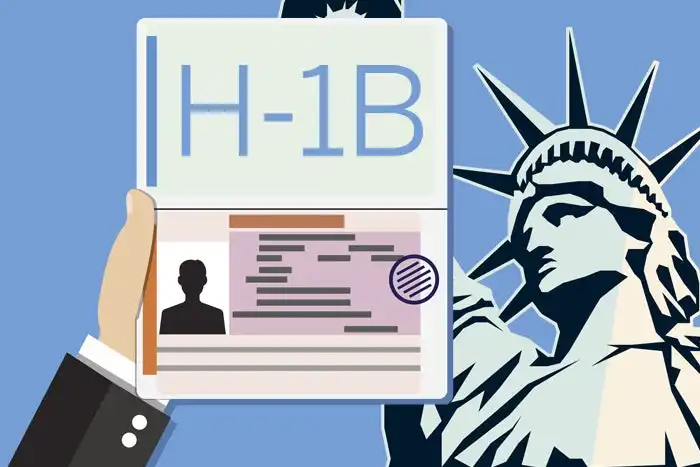American H1B Visa Guide for Workers in Specialty Occupations
This article on the American H1B visa guide for workers in specialty occupations is designed to educate you on all you need to know about the American H1B Visa.
The H-1B visa category is a temporary (non-immigrant) visa that permits companies to petition for highly educated foreign professionals to work in “specialty professions” that need a bachelor’s degree or equivalent.
Math, engineering, technology, and medical sciences are all examples of areas that qualify. An H-1B visa has a three-year initial term that can be extended up to six years.
The H-1B visa can also be seen as a non-immigrant work visa that permits firms in the United States to recruit foreign employees for special positions requiring a bachelor’s degree or higher. This can include jobs in IT, finance, engineering, architecture, and other disciplines.
What is an H-1B Visa?
The H-1B is a visa in the United States under the Immigration and Nationality Act, section 101(a)(15)(H), which allows US employers to hire foreign workers in the profession temporarily.
Subject-specific work requires specialized knowledge and a bachelor’s degree or equivalent professional experience. The stay is three years and can be extended up to 6 years.
After that, visa holders may need to reapply. The law limits the number of H1-B visas issued each year. In 2019, 188,100 new and first H1B visas were issued.
Employers typically need to withhold social security and Medicare taxes from wages paid to employees with H1B status.
The H1B visa originated from the H1 visa of the Immigration and Nationality Act of 1952. The separation of H1A (for nurses) and H1B was created by the Immigration Act of 1990.
Each year, 65,000 H1-B visas are available, from which employers can apply for working conditions.
Further changes to the H1B rules were enacted in 1998, 2000, and 2003 for Singapore and Chile in the 2004, 2008, and 2009 H1B Visa Reform Acts. Since then, the US Citizenship and Immigration Department has changed the rules.
Continue reading the American H1B visa guide for workers in specialty occupations to know more about it.
Required Documents for an H1B Visa Application
After paying the H1B visa fees, you must submit the required documents for employees as listed below:
- Your current passport.
- Copy of your current passport pages.
- All previous passports.
- Receipts that prove you have paid your visa fees.
- A photograph that meets the Digital Image Requirements.
- Visa interview appointment letter (Original and one copy).
- Printed Form I-129 Receipt number, the original, and one copy of Form I-129.
- Copy of Form I-797.
- Letter from your employer with your job description.
- Your qualifications (diplomas and certifications).
If you have worked before in the US, you will also have to submit the following:
- Your tax return forms.
- Names and contact information of previous employers and supervisors.
- Resume or CV.
- Payslips for the past 12 months.
If this is the first time you are applying, you should submit these additional documents:
- Resume or Curriculum Vitae (CV).
- Names and contact information of supervisors and managers of your current and previous jobs.
- Names and contact information of two co-workers of your current and previous jobs.
- A letter describing your job duties and responsibilities of the job you will have in the US.
- Photographs of your current and previous job locations.
- Photographs of the building where you will be working in the US (outside and inside), annual report, prospectus, and brochures.
- Bank statements.
Steps to Apply for an H1B Visa
#Step 1: Submit Form DS-160
Form DS-160, an online non-immigrant visa application form, is the standard form that all non-immigrant visa applicants fill out.
It asks for your personal information, background, and the purpose of your visit to the United States. Then, you will need to fill out and submit the required section for your visa.
After submitting, you will receive the confirmation page and the code required for the document file.
#Step 2: Schedule an interview
All non-immigrant visa applicants between 14 and 79 years old must attend a visa interview with an official from the US Embassy where they are applying. This is a standard procedure, and to be able to complete it, you must schedule a visa interview.
Since US Embassies might have high workloads, schedule your interview as early as possible to avoid long wait times. When you have scheduled it, you will receive an interview confirmation letter, which you need to bring with you on the day of the interview.
#Step 3: Pay the H1B visa fees
The visa application fee for the H1B visa is $190. You will need to pay this fee to proceed with your application. In addition to the registration fee, other fees may apply depending on your relationship with the United States. These are called visa issuance fees and vary from country to country. Please pay all fees and keep the receipt, as it will need to be attached to the document file.
#Step 4: Submit required documents for H1B Visa
All employers and sponsors who recruit foreign nationals to work in the United States must have their petition approved by USCIS. In addition, they will have to file a petition to allow foreign people to enter the country legitimately.
This is done by submitting Form I-129, a petition for non-immigrant workers to USCIS, and paying a submission fee of $460.
In addition to the fee form and receipt, H-1B visa sponsors must also attach the following supplementary document:
- Evidence that your business has an international cultural exchange program, such as catalogs, pamphlets, and other promotional materials.
- Proof of financial stability to pay first-quarter visa holders such as B. Annual reports, previous payments to similar positions, corporate tax forms, etc.
- Description of the exchange program, including detailed activities and locations for participants to share cultural information
- Evidence of eligibility for participants in the program by providing proof of age and education
All of these documents must be submitted to the appropriate USCIS branch. Once submitted, USCIS will review the petition and either approve or reject the program. If USCIS approves Form I-797, the sponsor’s participant’s request, an activation notice will be sent to both the sponsor and the cultural exchange participant.
After the USCIS approves the petition, it is up to the program participant or visa applicant to obtain a visa. The application must be through the US embassy or consulate in the applicant’s country of residence.
#Step 5: Attend the H1B interview
The interview is an essential step in the application process. Make sure you appear on time and with all your documentation on the day of the interview.
The interviewer will inquire about your background and motivation for visiting the United States. They will also ask about your plans, so make it clear that you intend to return to your home country.
Frequently Asked Questions (FAQs)
Can I prolong my H-1B visa?
Your H1B visa is typically good for three years, but it may be extended for up to six years. To do so, your employer must complete and file Form I-129 on your behalf, together with any supporting documentation, as well as pay the filing fee.
Who can sponsor the H-1B visa?
Any U.S.-based employer can sponsor the H-1B visa and register to file a petition on your behalf.
Can I apply for an H-1B visa if I don’t have a job first?
Because the H-1B visa is employment-based and you will need your employer to file certain forms for you, you will need a job offer before you are eligible to apply for the H-1B visa.
Is there a ban on H-1-B visas?
President Trump signed an executive order in June 2020 prohibiting the processing of H-1-B visas. However, that executive order is no longer in effect, so that you may resume working on your H-1B visa application.
How long will I be able to stay and work in the US on an H-1B visa?
The H-1B visa is valid for three years and can be extended for up to six.
Can I expedite my H-1B visa?
Yes, premium processing is available for the H1B visa. To request premium processing, you will need to submit Form I-907, Request for Premium Processing Service, and pay the filing fee to USCIS. You can do this simultaneously as you file your Form I-129 petition.
*#################*
*WELCOME TO UNCLE NE’S NEWSPAPER www.unclene.com*
*FOR JOB SEEKERS ON WHATSAPP, CLICK ON THIS LINK TO JOIN FOR DAILY JOB UPDATES:*
https://chat.whatsapp.com/HElP2JJNTnlGH3QmMos1eP
*Uncle Ne’s Job Group in Telegram with over 4870 members … when you join 500 previous jobs are sent to u:* https://t.me/joinchat/Kv8LAFUPi6qSmJColK-EWQ
Related posts:
*300 Fully Funded Gates Scholarships 2026 in the USA*
*Harvard Environmental Fellows Program 2026 in USA*
*1500 scholarships available opportunities, and Cameroon is eligible, many have been succeeding, Unc...
*Fully Funded Scholarships 2025 at UNIMORE, Italy*
*FCNY Community Planning Fellowship Applications Close June 9, 2025*
*Science & SciLifeLab Prize 2025 for Young Scientists*
*German Bonn International Fellowships 2025 Inviting Applications*
*National Higher Education Scholarship 2025 at Semmelweis University Hungary*
*SFR2CC Project Scholarship 2025/2026 at Kabale University*
*Moroccan Government Scholarships 2025 Open for International Students from Multiple Countries*
*Artificial Intelligence BSc Scholarship 2025 at University of Bradford*
*Telesat’s Women Scholarship 2025*
*Apply for ‘Study in Germany’ Ambassador Program 2025*
*Otsuka Toshimi Fully-funded Scholarship 2026 at APU Japan*
Multiple *US Embassies Inviting Applications for Fulbright Foreign Student Program 2026–2027*
*Fulbright Foreign Student Program for the 2026–2027 academic year is now officially open in several...
Discover more from UNCLE NE JOBS
Subscribe to get the latest posts sent to your email.

